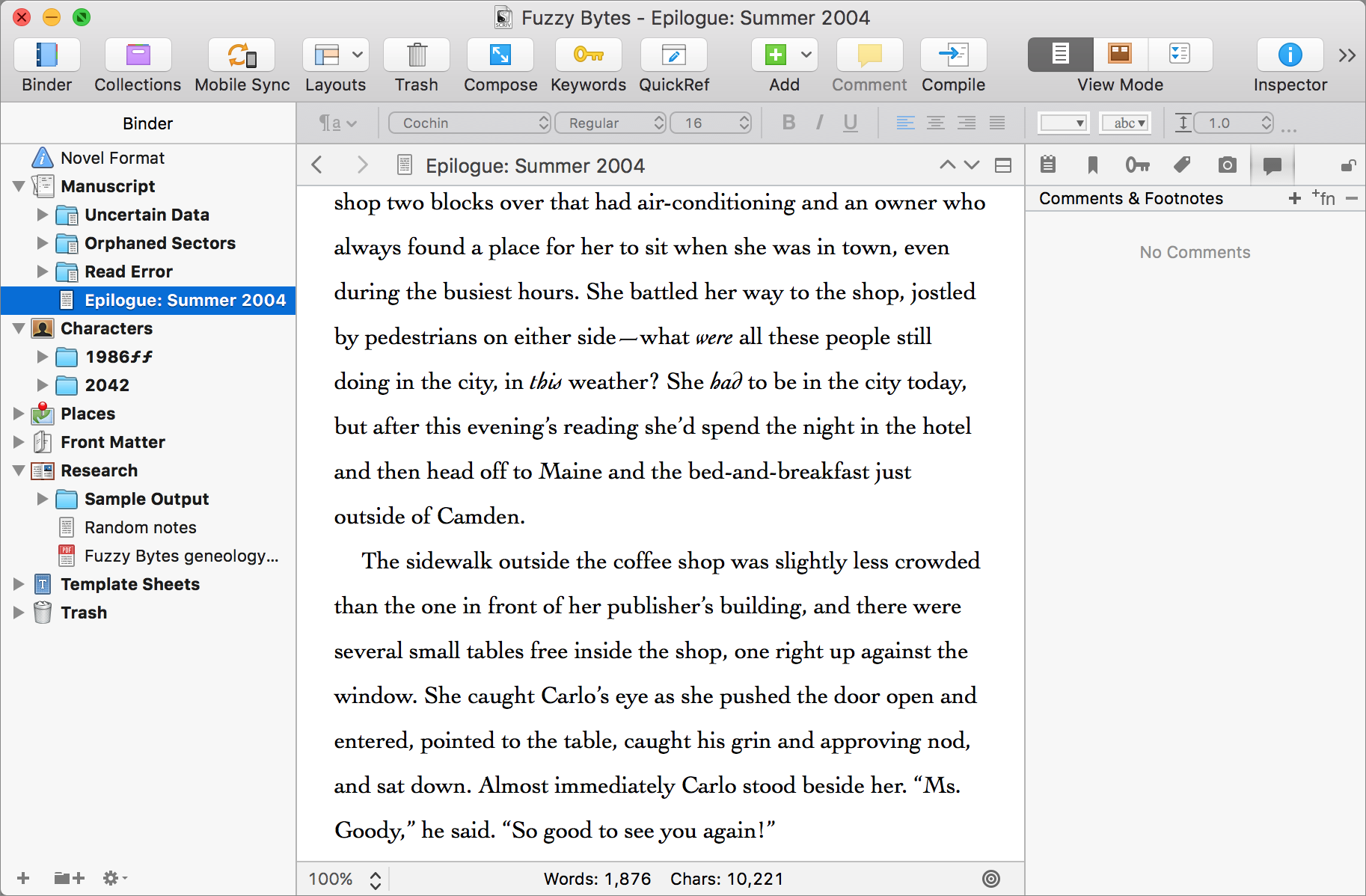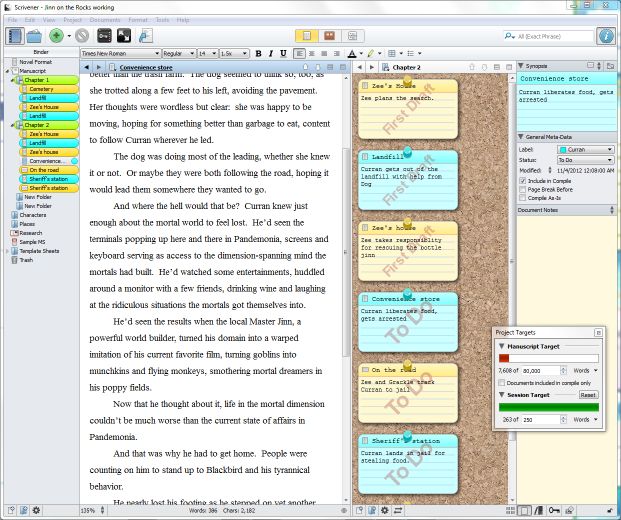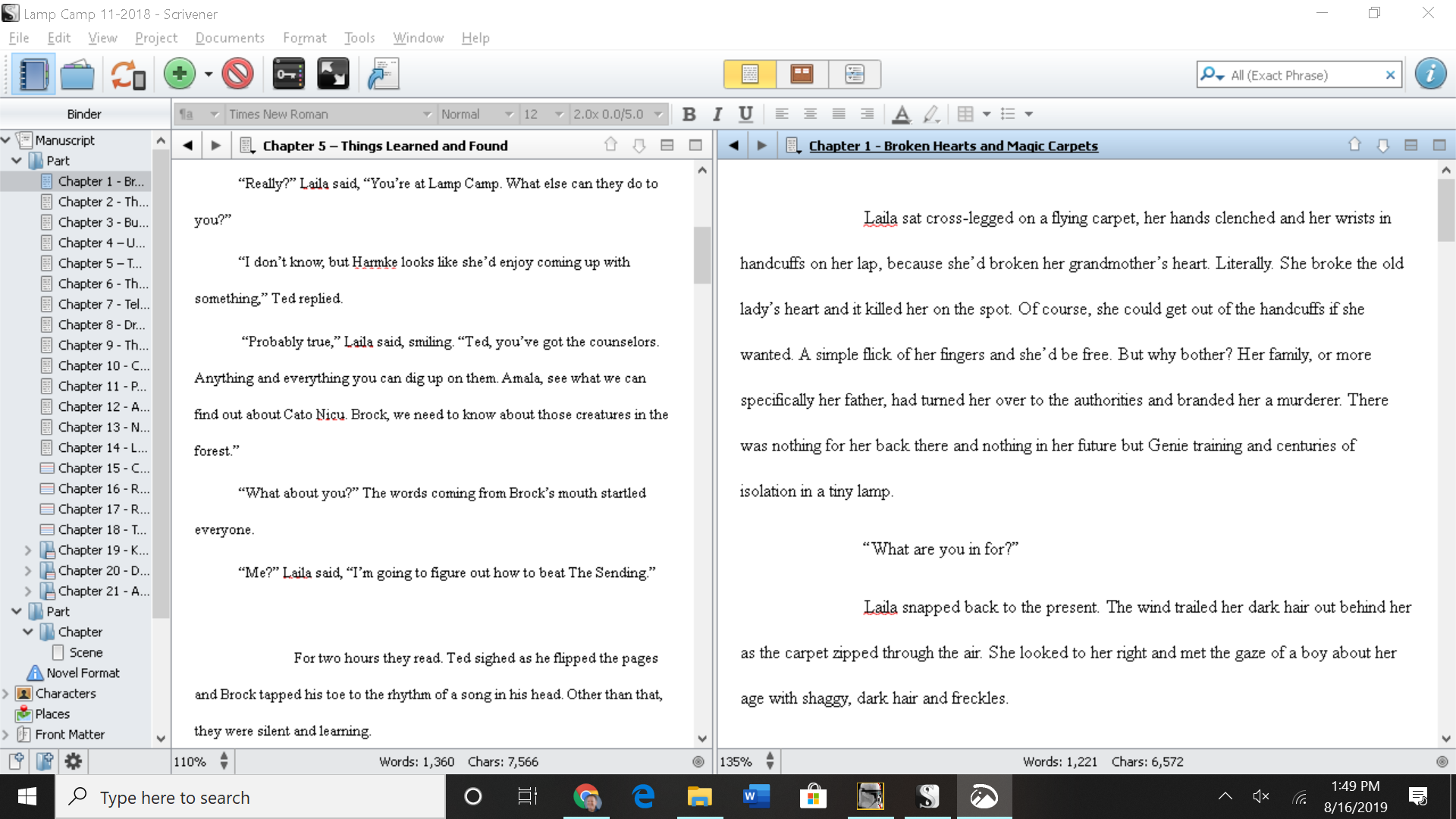When I first started using Scrivener, I was skeptical. I thought, What can this do that I can’t already do in Microsoft Word? I’m a true cheap skate, and the idea of spending $45 on a program that was basically the same as a program I already had seemed silly.
Photo by Haris Awang (creative Commons). Modified by The Write Practice.
However, I couldn’t argue with the people who recommended it. Seth Harwood, a novelist I admire, said, “I use Scrivener for writing my novels and a MacBook. I used to use Word, but literally I can’t imagine how I’d write a novel without Scrivener now… There’s nothing that can match Scrivener’s chapter view for seeing where the book has gone and is going.”
So I bought it.
And I’m not going back to Microsoft Word any time soon.

Here’s what I use Scrivener for:
1. Capture More Story Ideas
Scriveiner designs and supplies beautiful, luxury eco-friendly gifts such as handmade leather journals and pens, ideal as special gifts for loved ones and ourselves.
For two years, I’ve been doing research for a novel. Nearly every day I read something interesting pertaining to the story, or get a phrase to write down on a napkin, or see a picture on Pinterest that reminds me of one of my characters.
- Scrivener is a tool for serious writers. It helps you in a variety of ways. Helps you organize long writing projects such as novels, nonfiction books, academic papers, even scripts. Simplifies Editing is an essential part of any writing project.
- Scrivener is a powerful content-generation tool for writers to allow them to concentrate on composing and structuring long and difficult texts. It offers you complete control of the formatting and its focus is on helping you get to the end of that awkward first draft.
- Scriveiner Classic Collection EXPRESS ELEGANCE, SOPHISTICATION AND UNDERSTATED LUXURY – Scriveiner pens are designed in London, England and share the timeless attributes of.
In the past, I had a hard time capturing all those ideas into one, organized place. I had dozens of Word documents strewn around on my computer with snippets of text. I had piles of napkins and scraps of paper all over the house.
Scrivener made all that go away. Now I have one document to capture all my ideas in, whether they’re pictures, snippets of text, links to articles, or quotes from a novel.
I couldn’t have done that with Word.
2. Structure Your Book
I’ve worked on five book projects with Scrivener, and I’ve been impressed with how much easier it is to stay organized, especially between chapters and sub-chapters.
I’ve had people ask me whether I create separate Word documents for each chapter, and now I say, “Not anymore!” Scrivener lets me keep all my chapters separated but easily accessible, which is convenient when working on a big project.

3. Boost Your Productivity
Scrivener App
Scrivener also allows you to create word count goals for each section. So if you need to write five more chapters of at least 1,000 words, Scrivener lets you input each goal and see how close you are to achieving them at a glance.
I love word count goals. They keep me so motivated!
4. Sync Between Your Computer and Phone
Often when I’m stuck on a chapter, I like to take a walk to clear my head and brainstorm solutions. If any notes came to me during this process, I would take them down using Evernote, or another app, and then have to laboriously message them or copy and paste them when I came back to my computer.
Scrivener’s new iOS app makes this process seamless. I can sync my chapter with my phone, then take it with me without have to switch between different apps and documents. It’s a huge time saver.
5. Get Published!
Scrivener’s advanced “compile” feature allows you to quickly format your book into publish-ready PDFs, into eBooks, like ePub and mobi (for Amazon Kindle), which you can publish directly to services like Kindle Direct Publishing and Barnes & Noble, and even into documents for agents and publishers.
This can be a huge boost to efficiency. Plus, you don’t have to learn how to convert to all those formats yourself!
Scrivener is a Better Word Processor for Writers
Scrivener can be installed on Macs and PCs. You can purchase it and download it here.
Ready to try out Scrivener? You can download a free trial from Literature & Latte here.
All in all, Scrivener is better than Word for writers. If you’re having a hard time writing large projects with Word, it’s time for an upgrade.
More Articles About How to Use Scrivener
Interested in learning more about how to use Scrivener? Here are more resources:
Do you use Scrivener? What do you like about it? What other word processors do you use for your writing? Let us know in the comments.
(Some of the links above are affiliate links.)
Scrivener is a robust — and complex — piece of writing software. Intended as a one-stop solution for writers of all skill levels, Scrivener has a wide range of useful features… if you can figure out how to work it.
Pros:
- Powerful app with helpful features for every writing stage
- Flexible interface users can tailor to their needs
- Free templates
- 30 day free trial
Cons:
- Complex to learn
- More expensive than many other writing apps
- Newest version only runs on Mac
- Most users will only use a small handful of the features
For this review, the team at Reedsy has analyzed Scrivener with an aim to provide transparency and context. As a network that has helped authors publish over 10,000 books, we know the different needs authors have and are able to provide context for what features are the most useful, as well as what kind of writers would benefit from them.
If you want to cut straight to the chase and find out if Scrivener is the right writing app for you, we recommend taking this quick 30-second quiz.
🖋️
Which writing app is right for you?
Find out here! Takes 30 seconds

Otherwise, let's dive in!
What is Scrivener?
Scrivener by Literature and Latte is a word processor for Windows and Mac. Offering a variety of organizational features, formatting options, and goal tracking, Scrivener has been expressly designed to help fiction and nonfiction authors, screenwriters, journalists, academics, and more.
One of the issues many writers of long texts face is ease of navigation: assembling all their research and information in a way that’s easily accessible. Scrivener helps with this, offering writers the tools to organize concepts, notes, research, photos, videos, documents, and more.
It’s important to note, though, that when you talk about Scrivener there are really two separate writing apps: the Windows version, and the Mac one. Scrivener 3, while expected to release for Windows sometime in 2021, is currently only available on the Mac and is a significantly improved experience over its predecessors. Make sure you take note of which version is available to you when you’re deciding which novel writing app to use.
For this review, we’ll be focusing on Scrivener 3, though some of the features listed below are also present in earlier versions.
Fun fact: What does a scrivener do? Back in the day, a scrivener (or scribe) was someone who could read and write, and made their living writing or copying material on behalf of others.
How much does Scrivener cost?
Scrivener costs $49. However, if you purchased Scrivener 2 on or after August 20, 2017 can upgrade for free (users who purchased Scrivener 1 or 2 before that date can get a 45% discount off the purchase price).
Scrivener also has a 30-day free trial period, though it’s actually 30 days of use — so if you only use the program two times a week, you will have the trial for 15 weeks.
How do I upgrade to Scrivener 3?
If you already have Scrivener 2, you can upgrade via the Literature and Latte site. Click here, then select 'Upgrade from an older version' in the trial window.
The Binder: All your work in one place
At the center of a Scrivener project is the Binder. Touted as an innovative means of keeping all your notes, research, and manuscript files in one place, the Binder is really just a sidebar full of files. While it is incredibly useful to have everything within easy reach, Scrivener didn’t exactly invent the idea — sidebars have been used in everything from email to file browsers to, yes, writing apps, for decades now.
Still, Scrivener’s Binder does the job very well. And since there are so many different types of files associated with a Scrivener project, there needs to be a means of keeping them organized. Files in the Binder can be grouped together in subfolders, labeled with different colors and icons to allow for easy categorization and organization. It even includes a Trash folder, so you don’t need to worry about accidentally deleting something.
Corkboard: Get a big-picture view

A classic outlining and editing tool for writers is a simple stack of notecards. By writing down what happens in each scene and spreading the notecards out on the floor (or pinning them to a corkboard) authors have long been able to visualize their project as a whole, moving scenes around until they have a plot that flows smoothly.
Scrivener’s Corkboard mode takes that idea and runs with it. Each file in your project gets a “card” that you can customize with colors and labels, and then rearrange with ease. Like everything else in Scrivener, this feature is endlessly customizable, so each writer can develop a system that truly serves their workflow.
Bookmarks: Quick access to what matters
Software that claims to help you do something — like learning how to write a book — needs to walk a fine line between offering a variety of functions while also having an organized and easy-to-navigate interface. To that end, Scrivener utilizes a Bookmarks system.
It's exactly what it sounds like: you can seamlessly access any project documents that you refer to frequently. But what makes it especially useful is that clicking on a bookmarked document will open it side-by-side with your current document, allowing you to reference or edit it without having to switch back and forth between texts.
Let’s say you’re writing a novel and somewhere along the way you decide to make a big change to a character. If you have character templates or character development documents bookmarked, you can reference them right away and make a note of the change there, without skipping a beat in your writing session.
Templates: Save your settings
Because Scrivener has so many customization options, you may feel overwhelmed by the idea of configuring all those settings, only to do it again the next time you start a new project.

This is where Templates come into play. Scrivener lets you save all your options as a sort of “preset” that you can easily select for each new project you write. So if you’ve got a specific way you like your Binder set up for a long-standing fantasy series, you can just select the template when you start writing book twelve, and all the customization you’ve decided on for the first eleven books is ready and waiting for you.
Of course, if this book writing software wasn’t so complex to set up you wouldn’t need to save a template. But since it is, it’s great not to have to reconfigure everything each time.
Linguistic Focus mode: Zero in on problem areas
Linguistic Focus is a great tool that can help you identify and iron out your writing tics. Essentially, you can specify types of words or dialogue (direct speech, nouns, pronouns, verbs, adjectives, adverbs, prepositions, or conjunctions), and Scrivener will highlight that language within your story.
Why is this important? Well, let’s say you want to make sure that your dialogue tags aren’t distracting. Or maybe you have the feeling you’re repeating the same adjective throughout your writing. Linguistics Focus will allow you to zero in on these things to make sure your writing is as effective as possible.
So what’s the bottom line?
Scrivener works best for professional writers who:
- Have lots of notes or research associated with their books
- Plan to write a lengthy, in-depth series
- Plan to do extensive self-editing, or collaborate with an editor in another program
- Enjoy learning how to do new things on their computer
Scrivener For Mac
Scrivener may not be a good fit if you:
Scrivener Download For Windows
- Aren’t very tech-savvy
- Want to jump into writing faster (for that, we recommend Plottr or the Reedsy Book Editor)
- Write shorter pieces (essays, short stories, poems, children’s books)
- Need to collaborate easily, especially across multiple platforms
Reedsy rating: 4/5
Scrivener For Mac
[Updated: 07/20/2020 UTC]
